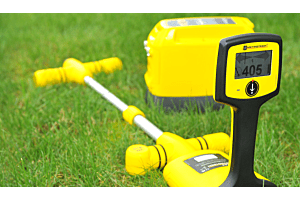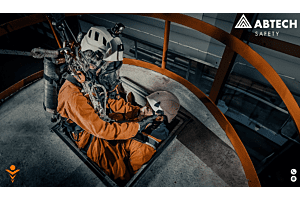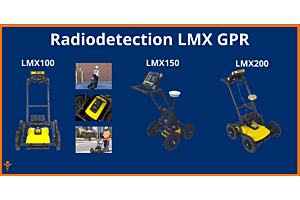
Calibration is a cornerstone in the world of cable locators, serving as a quality assurance measure that impacts everything from safety to efficiency. In this comprehensive guide, we'll explore the nuances of cable locator calibration, its role in enhancing accuracy and reliability, and how it contributes to safety and efficiency in underground cable locating and utility detection.
Calibration for Cable Locator Accuracy and Reliability
Calibration is the unsung hero in the realm of cable locator performance. It's the process that ensures your equipment provides precise readings, thereby enhancing both accuracy and reliability. When a cable locator is calibrated correctly, it minimizes errors, allowing technicians to confidently perform tasks like buried cable detection, cable mapping, and underground utility detection.
The significance of calibration extends to safety. Accurate calibration ensures that the device can effectively detect live wires or buried assets, reducing the risk of accidents or service disruptions. In essence, calibration is a critical component in cable locator maintenance that directly impacts the safety and efficiency of cable locating processes.
Calibration as a Safety Net in Underground Cable Locating
Safety is paramount in any cable construction or installation project. Calibration serves as a protective layer, ensuring that cable locators function optimally. Properly calibrated equipment can accurately identify potential hazards like live electrical cables or gas lines, thereby enhancing cable locator safety protocols.
Grounding techniques are also crucial for safety, and calibration ensures that the locator's ground connection is functioning correctly. This not only minimizes the risk of electric shock but also improves the clarity of signal detection. In summary, calibration is an essential practice in cable locator testing that ensures operator safety.
Efficiency and Productivity: The Economic Benefits of Calibration
Calibration is not just about accuracy; it's also about operational efficiency. A well-calibrated cable locator contributes to cable surveying and inspection tasks by providing accurate depth measurements and reducing false signals. This eliminates unnecessary excavations, thereby saving both time and resources.
Moreover, regular calibration is a best practice that maintains the performance integrity of cable locators. It ensures that the equipment remains reliable over time, even when exposed to environmental factors like temperature changes or electromagnetic interference.
Challenges and Best Practices in Cable Locator Calibration
Calibration comes with its own set of challenges, including the need for consistent results across different models and brands. Each cable locator may have unique features that require specific calibration techniques. Technicians must stay updated with cable locator industry trends and standards to perform accurate calibrations.
Best practices in cable locator calibration include:
- Establishing a regular calibration schedule
- Following manufacturer guidelines
- Utilizing certified calibration services
- Proper handling and storage of the equipment
By adhering to these best practices, companies can ensure reliable performance and adherence to industry standards.
The Future of Calibration in Cable Locators
The future holds promising advancements in cable locator calibration techniques, thanks to emerging technologies like artificial intelligence (AI) and automation. AI can analyze data quickly and accurately, leading to more precise calibrations, while automation can eliminate human error, ensuring consistent and reliable results.
Moreover, the industry is moving towards more sustainable practices, including eco-friendly calibration techniques that minimize waste and energy consumption. These future trends in cable locator technology are set to revolutionize how calibrations are performed, enhancing accuracy, efficiency, and environmental responsibility.
Conclusion: The Integral Role of Calibration in Cable Locating
Calibration is an indispensable practice in the field of cable locating. It ensures the accuracy, reliability, and safety of cable locators, thereby contributing significantly to operational efficiency. As technology continues to advance, ongoing research into improved calibration techniques will further enhance the effectiveness of these vital tools in tasks like cable repair, replacement, and maintenance.
Take the Next Step
Ready to invest in a cable locator that offers the best in calibration technology and safety features? Explore Our Range of High-Quality Cable Locators.
FAQs
- What is the significance of calibration in cable locators?
Calibration is essential in cable locators as it ensures accurate and reliable measurements, allowing for precise cable locating and reducing the risk of damage to underground utilities.
- How does calibration contribute to ensuring safety during cable locating?
Calibration helps maintain the accuracy of cable locators, preventing false readings and potential accidents, ensuring the safety of operators and preventing damage to nearby infrastructure.
- What impact does calibration have on locating accuracy and efficiency?
Calibration directly affects the accuracy and efficiency of cable locators. Proper calibration ensures precise measurements, leading to accurate cable locating and minimizing the time and effort required for the process.
- What are some common challenges faced in the calibration of cable locators?
Common challenges in calibration include environmental factors such as temperature and electromagnetic interference, as well as the need for specialized equipment and expertise to perform accurate calibrations.
- Why is regular calibration important for cable locators?
Regular calibration is crucial for maintaining the accuracy and reliability of cable locators over time. Environmental factors and normal wear and tear can affect calibration, making regular calibration necessary to ensure consistent performance.






Login and Registration Form